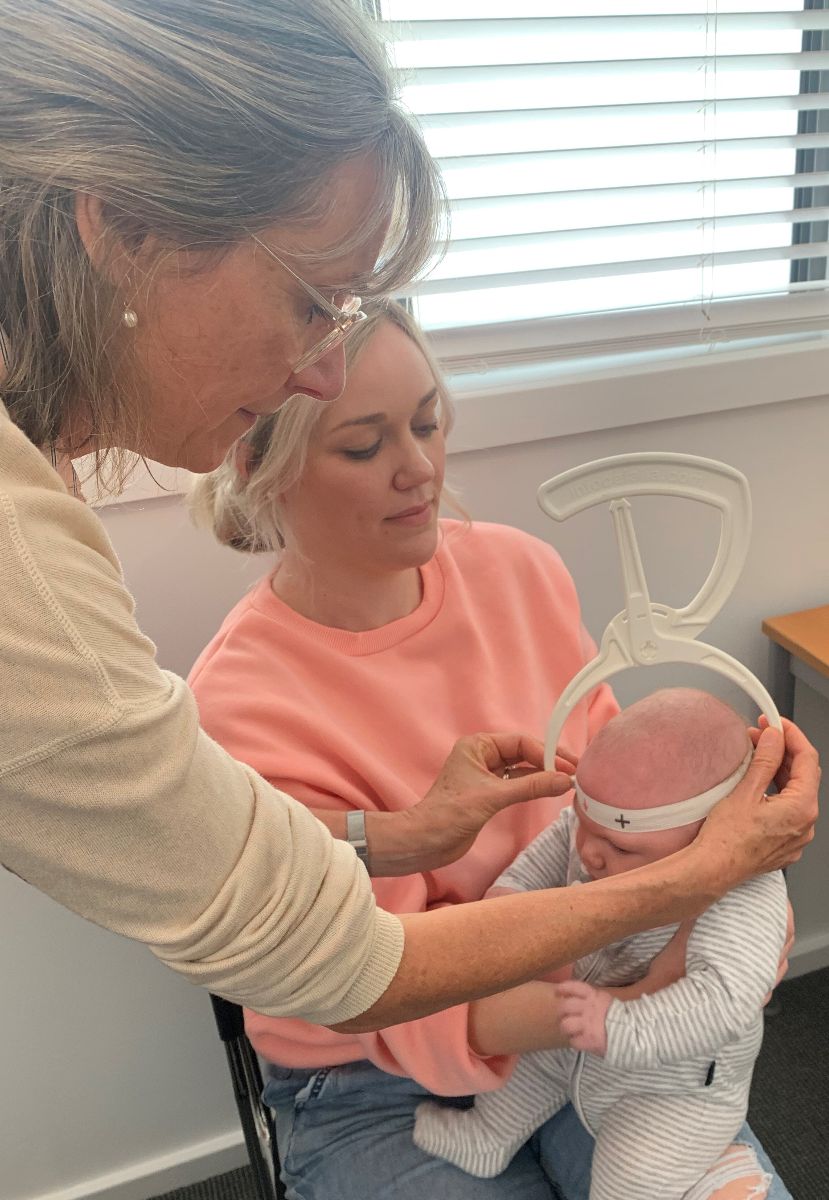Positional Plagiocephaly
Babies with flat and/or asymmetrical heads are a common presentation in many chiropractic centres. Since the Back to Sleep campaign started in 1992, the number of babies with positional plagiocephaly has skyrocketed, affecting almost half of all babies aged 7-12 weeks (1). It is interesting how we have jumped straight to the conclusion that it is the external compressive forces on the head from the supine sleeping position that causes the deformation. However, there may be a little more to it than that. Research suggests that the cause of the flat head may actually be due to lack of movement by the baby, secondary to the supine position (2). Many parents are very concerned and diligent about their baby’s sleeping position, to the extent that they may feel that not placing their babies on their tummies at all is the safest thing to do. Add to that that being prone requires much more effort on behalf of the baby, often resulting in them objecting and crying, so again parents may be reluctant to place baby prone. However, with the supine position comes less movement, less exploration and less building of core strength and overall muscle tone. One study showed that encouraging parents in the maternity ward to provide physical stimulation to their baby decreased the incidence of flat heads, despite sleeping and resting supine (2).
This theory makes sense when you look at the long-term issues of plagiocephaly (3,4,5,6). Several studies have shown that school children with a history of plagiocephaly score less well than their peers and siblings on academic and cognitive tests. They have five times higher risk of speech delay and comparatively more children with plagio struggle with motor development and coordination. Lack of physical movement and lower muscle tone decreases brain stimulation, resulting in slower development and cognitive function.
The take-home message for chiropractors and parents alike, is to not sit back and wait for the baby’s hair to grow. Yes, that will make the deformation much less obvious, as will a helmet. However, neither will improve the functional deficits in physical or brain stimulation. Rather, improving movement and function is the way to go.
Obviously, it is important to monitor the response to care over time. This is easily done by the use of calipers (available online):
While the parent supports baby in the sitting position on their lap, preferably holding baby’s head still, gently place the elastic headband so the arrow points to the nose and the cross is over the EOP. Then place the prongs of the calipers on the crosses on the headband, and measure side-to-side (or front-to-back, in case of bilateral flattening).
If you are interested in learning more about chiropractic care for kids, don’t forget the Kids’ Summit coming up in Sydney, August 28-29. Not only will you hear from Australia’s best Kids’ Chiropractors, you will also help raise much-needed funds for research into chiropractic care for kids.
See you there!
Yours in health,
Dorte Bladt
- (1) The Incidence of Positional Plagiocephaly: A Cohort StudyAliyah Mawji, Pediatrics August 2013, 132 (2) 298-304;



